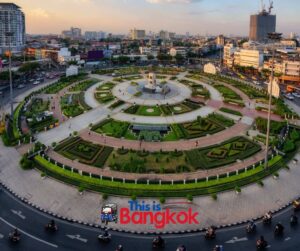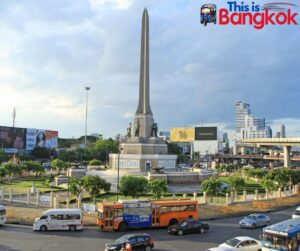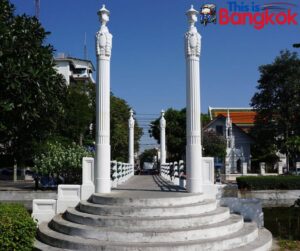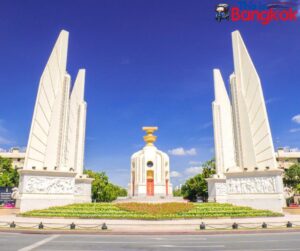Equestrian statue of King Chulalongkorn
The Equestrian Statue of King Chulalongkorn (King Rama V Monument), also known as Rama V, is a prominent monument in Bangkok, Thailand.
King Chulalongkorn, who reigned from 1868 to 1910, is one of the most revered monarchs in Thai history due to his significant efforts in modernizing and reforming the country, ensuring its independence from colonial powers, and promoting education and social progress.
The statue is in front of the Ananta Samakhom Throne Hall within the Dusit Palace complex.
The Dusit Palace complex is an important historical and cultural area in Bangkok, which includes several royal buildings and monuments.
Key features of the Equestrian Statue of King Chulalongkorn:
Design and Symbolism
The statue depicts King Chulalongkorn seated on horseback, wearing traditional Thai royal attire.
He is shown with his right hand raised in a gesture of salutation, a symbol of his benevolence and commitment to his people’s welfare.
The statue is made of bronze and stands on a tall pedestal.
Historical Significance
King Chulalongkorn was pivotal in modernizing Thailand and ensuring its sovereignty during colonial expansion in Southeast Asia.
His reign saw the abolition of slavery, the modernization of the government and military, the introduction of a Western-style legal system, and various other reforms that laid the foundation for Thailand’s development into a modern nation.
Location
The statue’s placement in front of the Ananta Samakhom Throne Hall underscores its significance. The throne hall was built during King Chulalongkorn’s reign and was used for various royal and state functions.
Ceremonial Occasions
The Equestrian Statue of King Chulalongkorn is a prominent location for various ceremonial and cultural events, including royal ceremonies and exhibitions.
It is also a popular tourist attraction.
Historical Context
The statue was unveiled on November 11, 1941, during the reign of King Ananda Mahidol (Rama VIII) and King Bhumibol Adulyadej (Rama IX).
It serves as a symbol of the enduring legacy of King Chulalongkorn and his contributions to Thailand.
Visitors to Bangkok often visit this iconic monument as it provides a glimpse into Thailand’s rich history and the vital role that King Chulalongkorn played in shaping the nation’s modern development.
The statue symbolizes Thai pride and a reminder of the country’s dedication to progress and independence.
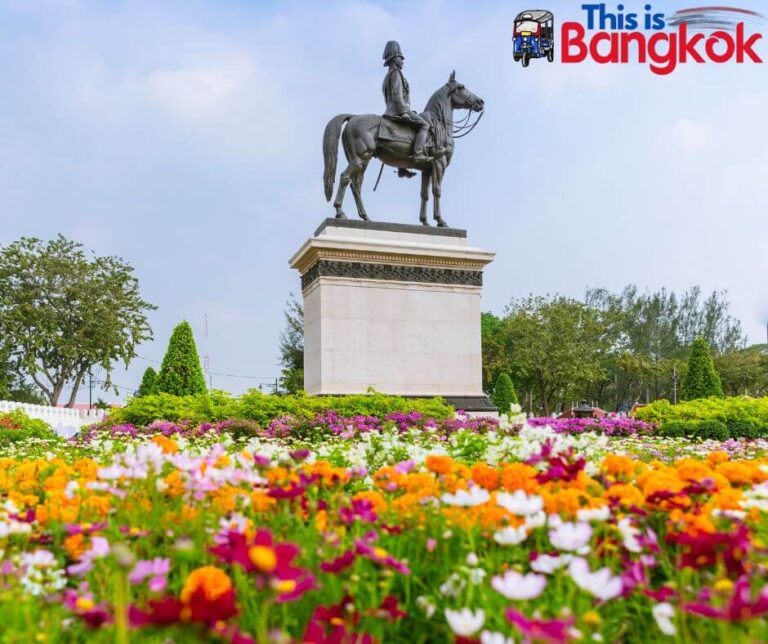
| Feature | Details |
|---|---|
| Location | In front of the Ananta Samakhom Throne Hall, Dusit Palace Complex, Bangkok |
| Monarch | King Chulalongkorn (Rama V) |
| Material | Bronze |
| Symbolism | King Chulalongkorn seated on horseback with a raised hand gesture of salutation, symbolizing his benevolence and commitment to his people. |
| Historical Significance | Modernized Thailand, abolished slavery, introduced Western-style reforms, and ensured Thailand’s sovereignty during colonial expansion. |
| Unveiling Date | November 11, 1941 |
| Use | For ceremonial and cultural events, royal ceremonies, exhibitions, and as a tourist attraction. |

